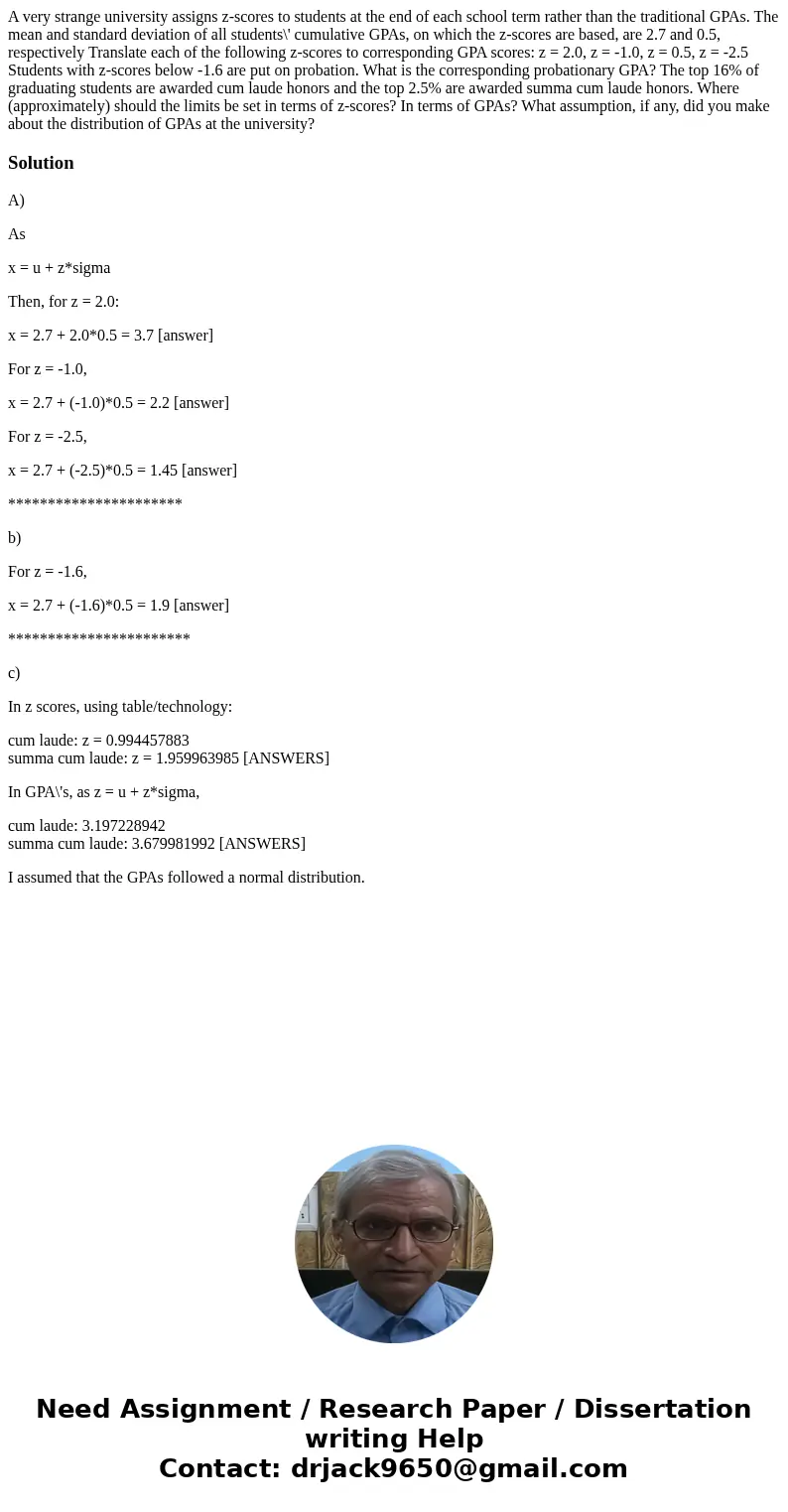A very strange university assigns zscores to students at the
A very strange university assigns z-scores to students at the end of each school term rather than the traditional GPAs. The mean and standard deviation of all students\' cumulative GPAs, on which the z-scores are based, are 2.7 and 0.5, respectively Translate each of the following z-scores to corresponding GPA scores: z = 2.0, z = -1.0, z = 0.5, z = -2.5 Students with z-scores below -1.6 are put on probation. What is the corresponding probationary GPA? The top 16% of graduating students are awarded cum laude honors and the top 2.5% are awarded summa cum laude honors. Where (approximately) should the limits be set in terms of z-scores? In terms of GPAs? What assumption, if any, did you make about the distribution of GPAs at the university?
Solution
A)
As
x = u + z*sigma
Then, for z = 2.0:
x = 2.7 + 2.0*0.5 = 3.7 [answer]
For z = -1.0,
x = 2.7 + (-1.0)*0.5 = 2.2 [answer]
For z = -2.5,
x = 2.7 + (-2.5)*0.5 = 1.45 [answer]
**********************
b)
For z = -1.6,
x = 2.7 + (-1.6)*0.5 = 1.9 [answer]
***********************
c)
In z scores, using table/technology:
cum laude: z = 0.994457883
summa cum laude: z = 1.959963985 [ANSWERS]
In GPA\'s, as z = u + z*sigma,
cum laude: 3.197228942
summa cum laude: 3.679981992 [ANSWERS]
I assumed that the GPAs followed a normal distribution.

 Homework Sourse
Homework Sourse